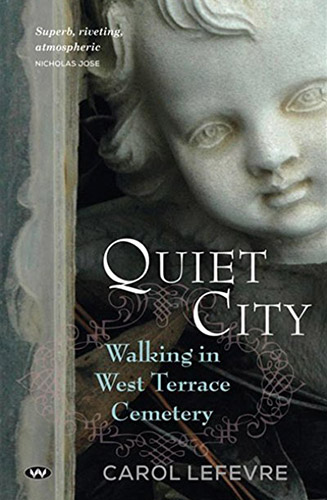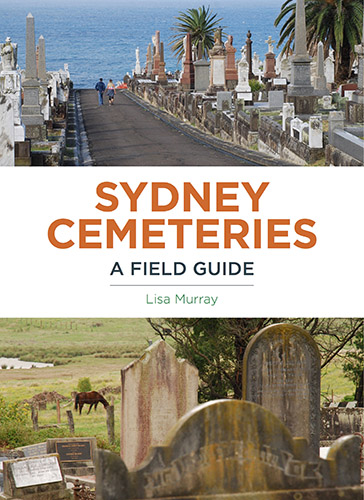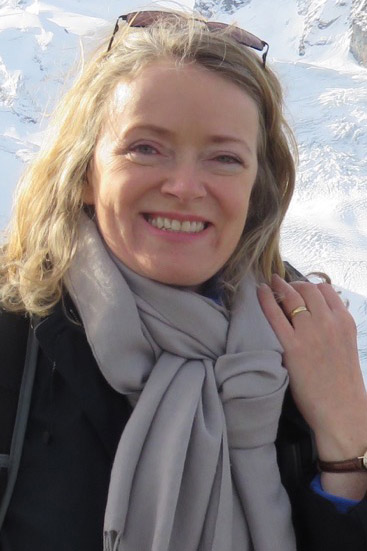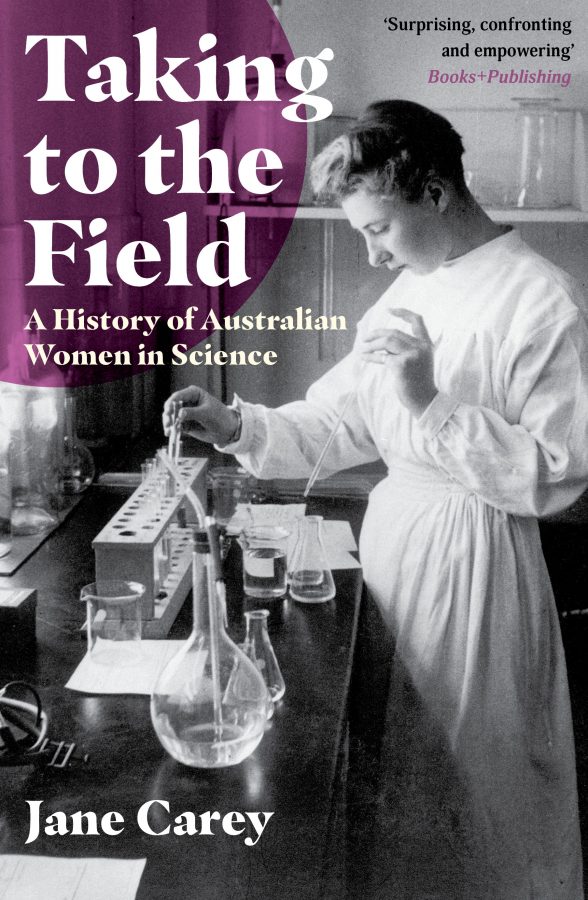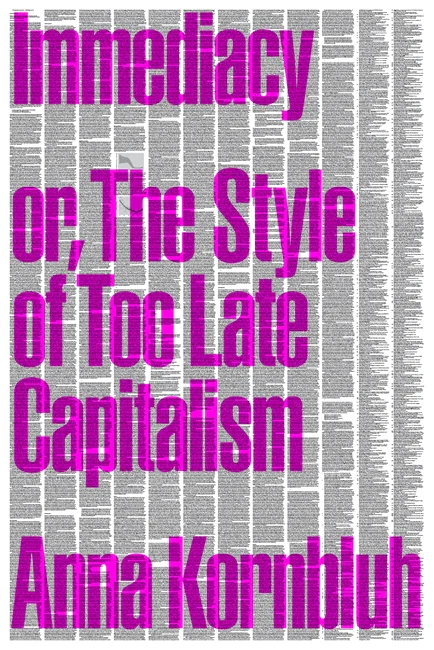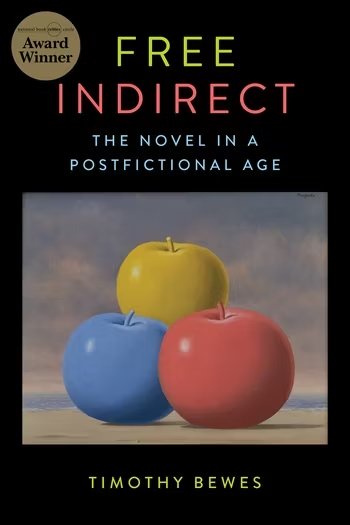Why do people visit cemeteries? Why did they historically, and why do they – if at all – today? From reading Carol Lefevre’s Quiet City: Walking in West Terrace Cemetery and Lisa Murray’s Sydney Cemeteries: A Field Guide, I’ve identified eight reasons for cemetery-visiting: to tend the graves of loved ones; to pay tribute to admired public figures; to meditate on the inevitability of death and the shortness and chanciness of life; to enjoy a specific kind of public space; to appreciate funerary art; to absorb a romantic, poetic or gothic atmosphere; to carry out historical research; and to engage with characters and stories. There’s a rough chronology here, from ancient to modern understandings of what a cemetery is for and the kinds of satisfaction that visiting one can provide.
I’ll begin by disclosing something I realized while writing this essay: I have never visited the grave of a person known to me. That’s because most of the people I know who have died don’t have graves. They were cremated, as have been the majority of middle-class Protestants who have died in Australia since the 1960s. Within the demographic in which I was raised, burial was considered old-fashioned, and to choose it would have seemed perverse. Cremation was regarded as modern, hygienic and space-efficient; it saved cemetery space and it saved the dead from rotting and stinking. The body’s slow decomposition through the combined actions of earth, air and water was regarded as a self-evidently worse fate than its fast disintegration under force of fire. The violence of the burning process was never mentioned.
After cremation the ashes were placed behind little plaques in crematorium gardens, which nobody ever visited. I don’t know where any of my grandparents’ ashes were placed or what words were inscribed over them. My extended family put little effort into memorializing its dead. Indeed, the older generation thought it was morbid and self-indulgent to draw out mourning, to linger with those lately or long lost. Then came the fashion for scattering ashes. Although I was never involved in any such dispersal, I heard stories from friends of scatterings of parents (and pets) at their favourite places. The chosen location often involved wind, waves and water, which increased the sense of the dead ones’ immateriality and hence their transcendence, after death, of the awful facts of embodiment. Scattering is often a ceremonious occasion (I am told), but by its very nature provides no fixed place for memorial return.
The oddity of these ways of managing death became clear to me while reading about the immense value that has historically been placed on marked, inscribed, visitable resting places for human remains. My grave-free upbringing has begun to seem very strange. I’ve started thinking about trying to find out where various forebears were buried, even tracking down those long-ignored crematorium plaques put in place for closer family members. Some kind of tending and attending has come to seem desirable; I feel the lack of it.
Visiting the graves of famous people, on the other hand, is something I’ve long done. I’ve visited the graves of writers, mainly, but also of artists, musicians, philosophers, kings, queens, and prime ministers. I have paid my respects at Anne Brontë’s grave but not at that of my own great-grandmother. Graves haven’t figured at all in my sense of myself as a person with biological progenitors, yet they’ve played a part in my attempts to connect with individuals whose artistic achievements I admire. Reading these two books, one a practical guide to visiting nearly a hundred Sydney cemeteries, the other a personal response to one historic cemetery in Adelaide, has caused me to ponder this anomaly for the first time, while also thinking more broadly about the social and psychological uses of cemeteries, beyond their basic purpose as body-disposal sites.
One of the most important of these secondary uses, in the past at least, was the memento mori function of cemeteries. Lisa Murray reproduces an epitaph from a headstone in St Thomas’ Anglican Cemetery at Mulgoa that captures the sense of urgency with which death, particularly the prospect of sudden death, was once pointed out to the living as a spur to spiritual action:
All you that come my grave to see
Prepare yourselves to follow me
Repent in time make no delay
For I in haste was called away.
This headstone marks the grave of one Peter Brown, who died in 1839 at the age of 28. The message is simple. Make haste! Repent! Time is short! The day is coming! The same verse appears on an obelisk in the Uniting Church cemetery at Cawdor marking the grave of Frederick Cox, who died in 1856 aged 14, his lifespan only half that of Peter Brown. Murray notes that the verse appears again on another headstone in the same cemetery, this time marking the resting place of the even younger Stephen Doust, who drowned at age 9 in 1857. The verse is followed by what Murray calls ‘a desperate personalised warning from the grave’:
One Week Before This Grave Was Dug
From Yonder Tomb I Learn’d the above
Nor Did I Think I Should So Soon
By Sudden Drowning Be Call’d Home
Remember Death Ye Young and Gay
Prepare For it and Judgement Day.
In Castlereagh Cemetery in Sydney’s Hawkesbury region, the grave of Mary Ann Smith, who died suddenly in 1814 at the age of 34, bears a similar warning in a riddle-like verse:
Good people all as you Pass by
As you are Now so once was I
And as I Am so must you be
Therefore Prepare to follow me
Simple as the lines are, they wield irresistible rhetorical power. The use of the figure of chiasmus – you, I, I, you – executes a pincer movement on the poem’s readers, trapping them in the vice-like grip of religious imperative by forcing them to confront the inevitability of their own deaths. And, speaking of imperatives, look at the commands issued in these three epitaphs: Prepare, Repent, Remember, Prepare, Prepare. These nineteenth-century graveyard messages are as relentless in their mission to save sinners as any old-time evangelical revivalist.
Murray describes the last inscription as ‘Mary speak[ing] to us through her epitaph’, and she likewise writes of Cox ‘speak[ing] from the grave’. But in these gravestone inscriptions, who is really speaking? First-fleeter and agricultural pioneer James Ruse is said to have carved his own headstone, so presumably both its sentiments and its spelling mistakes are his own. Most people, though, don’t compose their own epitaphs, and especially not those who die suddenly. Indeed, the underlying conceits of heedless youth and unheralded death mean that although the headstones quoted above use the first-person, they can’t possibly have been pre-written by the person whose grave they mark. They must express the views of someone else (grieving relative, pious sexton), who snares the reader’s interest by harnessing the dramatic power of ‘the voice from the grave’.
An epitaph is a speech act. Addressing an unknown ‘you’ (singular or plural), these memento mori epitaphs actively solicit attention. Their rhetorical position is one of hailing and accosting the passerby: Hey you! Yes, you! And although the Judgment Day message may no longer have the universal authority it was once presumed to wield, there is something disarming and even shocking about the directness of such an address, even when it reaches across a gulf of two hundred years. ‘As you are Now so once was I / And as I Am so must you be.’ The insistence on our common lot shrinks the gap between the undeniable fact that we must all die and the unimaginable physical state to which we must all thereby be reduced.
The theological standpoint of these grave inscriptions relies on the fear of damnation but also offers consolation in the prospect of reunion after death in heaven. Ann Smallwood’s headstone at St James’ Anglican cemetery, Pitt Town, alludes to this prospect:
Farewell dear friends
Seven Babes adieu. My
Soul I hope to heaven
Has flew, where I hope
We shall meet again,
Where Christ for ever
Lives and reigns.
The tone of this 1838 epitaph is gentler than the repent-and-prepare-to-die messages of the other grave inscriptions quoted above. The word ‘hope’ is used twice, in relation both to Ann’s personal salvation and to the salvation of those ‘dear friends’ she would wish to ‘meet again’. It is a modest and appealing statement of Christian faith. I wonder who composed this message that purports to be, as Murray puts it, ‘the young mother Ann speaking from the grave’. Could Ann herself have ordered the inscription before she died? If not, who speaks for her here, or makes her speak for him?
Murray notes that this headstone ‘demonstrates the illiteracy and mixed skills of early stonemasons [in New South Wales]. The inscription and epitaph features uneven spacing of words, both upper and lower case lettering within the same word, a correction over-incised to insert a missed word and small letters snuck in to correct spelling mistakes.’ Such lack of sophistication in the execution of the inscription contrasts with the somewhat pretentious diction of the first two lines, the stagy ‘farewell’ and aspirational ‘adieu’. The decision to rhyme the latter with the ungrammatical ‘flew’ is endearing. I would love to know who devised these lines and caused them to be engraved on Ann’s tombstone, and how the mingled grief and piety of their composer helped or hindered the family to deal with the unutterable tragedy of those ‘Seven Babes’ left motherless.
Murray also traces the historical decline of the cemetery’s function as a vehicle for religious didacticism. In a section titled ‘Symbolic Gestures: The Hidden Meanings of Headstones’, she discusses the increasing popularity of the ‘weeping widow’ motif in funerary sculpture over the course of the nineteenth century. ‘A symbol of remembrance as well as faith, it represented the idea of the grave as a site of personal meditation and consolation, and marks a shift away from memento mori symbols to personal remembrance.’ Weeping widow sculptures, which depict upon the grave an image of a mourner at the grave, provide a kind of ‘how-to’ of grave visitation. In their self-referentiality, they offer the graveyard visitor a model of appropriate demeanour – meditative, reflective, inward-looking. The ‘weeping widow’ motif became popular, Murray says, because of enthusiasm for the scene of graveyard lamentation in Goethe’s 1774 novel The Sorrows of Young Werther. This is interesting, because the often-reproduced image of ‘Charlotte at Werther’s grave’ doesn’t represent a weeping widow at all, but rather a married woman driven to despair by the suicide of the man she loved, who was not her husband. Goethe’s influential scene fostered a cult of Romantic mourning that came to be normalized as appropriate grieving behaviour.
Today, cemeteries can fulfil emotional and philosophical functions quite different from those for which they were intended. Carol Lefevre suggests another use again for graveside reflection:
For a place where so much grief has gathered the cemetery has a palpable calm, and I wonder if perhaps this is its true function, aside from the aspect of crude disposal – as a site where grief can culminate and quietly disperse. Walking here, even while engaged in some harmless, seasonal quest – perhaps to inspect the fruit-laden quandongs or to check the progress of the pretty blue or white-flowered Scilla peruviana – I am unconsciously absorbing the whispered message of the physical world’s impermanence.
For Lefevre, this awareness quickly moves to a discussion of Buddhist meditations, particularly those on the mutability of all things and, more confrontingly, on the inevitability of death. She writes: ‘It occurs to me that walking here [in West Terrace Cemetery] opens a subtle pathway through this difficult practice. Whether we know it or not, the site, like a labyrinth, guides us through all the stages of the death awareness meditation.’ Memento mori has returned, but framed differently, within a Buddhist rather than a Christian worldview, and with a different aim – not a race for salvation, but the acceptance and celebration of life’s fleeting beauty.
The resignifying of sacred spaces is a common practice of urban renewal. In our towns, churches that have lost their congregations are turned into cafés, restaurants, public libraries, desirable city residences. Old churchyards become parks (of which, more later). Lefevre suggests that in such apparently obsolete places we can still find resources for a practice of personal renewal, one that is no longer theological but may still have intense spiritual value. Her reimagining of West Terrace Cemetery as a Buddhist meditation labyrinth made me think of Philip Larkin’s 1954 poem ‘Church Going’, in which the poet tries to understand why he is drawn to places of worship affiliated with a religion he doesn’t believe in. He concludes that the church is a ‘serious house on serious earth’ and will continue to be visited because
… someone will forever be surprising
A hunger in himself to be more serious,
And gravitating with it to this ground,
Which, he once heard, was proper to grow wise in,
If only that so many dead lie round.
Larkin’s wording leaves open whether he is talking primarily about the church or the churchyard here, although the last line does make clear how central to his poetic argument is the fact that ‘so many dead lie round.’ And indeed the idea that the presence of graves will induce gravity of thought, that one will feel grave in a graveyard, makes sense. This association survived the secularization of burial grounds when ‘general cemeteries’ emerged in the nineteenth century as alternatives to overcrowded (and sometimes unsanitary) churchyards.
Murray summarizes the qualities of the ‘cemetery ideal’ envisaged in the nineteenth-century push for burial reforms:
Cemeteries could fulfil public and private commemorative functions, and provide both moral guidance and good examples of virtuous lives. An emphasis on moral improvement through meditation upon the grave or memorial encouraged ‘contemplative recreation’ in the cemetery.
Père-Lachaise cemetery in Paris, established in 1804, helped to set the reformist trend for public cemeteries and remained a benchmark in their planning around the world, including in the Australian colonies. It was invoked as a model during a parliamentary inquiry in 1845 into the desirability of establishing a general cemetery in Sydney. Speakers praised both the ‘stimulus to art’ such a cemetery could provide through the building of ‘handsome tombs and monuments’ and the opportunity it presented to add to the city’s stock of green recreational space. A picturesque cemetery that offered room to walk and places to sit could be, as Murray puts it, ‘a chaste and instructive space for passive recreation’, or in the words of a Sydney Morning Herald editorial of 1862 about the planned new necropolis, Rookwood, ‘a place of festive or pensive resort’.
Festive? The word seems incongruous, yet it signals the late Victorian embrace of public cemeteries as places for promenading, picnicking, sight-seeing, even courting. Murray quotes a Sydney guidebook of 1879, which describes ‘crowds thronging the Necropolis’ at Rookwood on weekends. They were attracted to the garden-like environment, the unusual plants on show, the avenues that lent themselves to strolling arm-in-arm, and the artistic quality of the memorials. There was a lot to see and, once tea-rooms were established in the early twentieth century, to do.
I visited Rookwood for the first time a few weeks ago. There is just one public café there now, and on the Tuesday morning of my visit most of the other customers were workers taking a break from resurfacing the road near the cemetery entrance. I enjoyed my cake and coffee but was upset by the radio that blared a mixture of pop, rap and advertisements through the café’s outdoor seating area. It seemed so disrespectful, so out of place – yet obviously the staff at the café didn’t think so. If Rookwood was conceived back in 1862 as a place of both ‘festive [and] pensive resort’, who am I to complain, 150 years later, about a little commercial music? Still, I do.
On the other hand, I have no problem with the dogs that run, and the dog-owners who laugh and chat, and the children who play and the mothers who picnic at a place that is very dear to my heart, the St. Thomas’ Rest Park (formerly St. Thomas’ Churchyard) in Crows Nest. St. Thomas’ is a cemetery conversion, one of a spate that took place across Sydney in the 1970s, and I didn’t realize until reading Murray’s book just how reviled these conversions are by historians and true cemetery aficionados. The NSW Conversion of Cemeteries Act (1974) gave formal authority to a process that began as long ago as the 1930s, whereby local councils took over neglected cemeteries and cleared or moved headstones to create ‘rest parks’ or ‘memorial parks’ (sometimes called ‘pioneer memorial parks’). Well-known examples exist in Newtown, Leichhardt, Matraville and Liverpool, with many more across the Sydney area.
Murray’s usual response to these converted cemeteries is to describe them as ‘nasty’, ‘underutilized’, ‘soulless’, each one a mere ‘shadow of its former self’. She does, though, make something of an exception for St. Thomas’, observing: ‘This is a busy, much-loved park, favoured by dog walkers. An enclosed children’s playground in the north-west corner makes this the perfect family picnic spot.’
I will go further and say that, for all the archaeological sins of its ‘conversion’, St. Thomas’ still has what it takes to fulfill the ancient psychological functions of a burial ground. In this place, where ‘so many dead lie round’, the grave memorials issue constant invitations to the visitor to pause and think about lives well lived and lives wasted or cut short; to meditate on impermanence and loss; to face grief and perhaps work through it. I went there often some years ago during a time of dual loss, when my mother was slipping into the abyss of Alzheimer’s disease, and my IVF treatments for a much-wanted second child failed. It was, I found – and I now have Carol Lefevre’s words to describe the experience – ‘a place where grief [could] culminate and quietly disperse.’ I wrote about this cemetery in an essay for Southerly titled ‘St. Thomas’s Churchyard’: a defence, I guess, of cemetery conversions, or at least of this one. I felt that the park-cemetery was a place where the dead and their stories framed the experiences of the living, and the living in turn gave their attention and an evolving meaning to the experiences of the dead.
The considerable age of the headstones and monuments at St. Thomas’, many of which reach back to the very early days of the colony, was significant for the way that I understood and appreciated the cemetery. Modern burial grounds can be fascinating for what they tell us about our own society – I was transfixed by the Islamic and Chinese sections at Rookwood – but older graveyards have particular sources of appeal. There’s the overall atmosphere of poetic melancholy, sometimes verging on gothic romance. There’s the pleasure of looking at individual pieces of funerary art; I think Murray is right to say that ‘[c]emeteries are like outdoor sculpture parks’ and it seems to me that earlier generations explored the potential for emotional expression through cemetery sculpture more freely than we tend to do today. There’s the opportunity to learn things about the past, such as how high the infant mortality rate was in nineteenth-century Sydney. But, most of all, there are the individual stories told or implied by graveyard memorials, which have the ability to speak to us across time with a value more than historical.
It was the power of story that drew Carol Lefevre to Adelaide’s West Terrace Cemetery, the subject of her book Quiet City. ‘I am not a historian but a writer with a love of stories’ she declares (and disclaims) in the preface, ‘A Poetic Place’. Her book belongs to the genre of the walking memoir, very prevalent these days in nature writing; it is a product of combined actions of wandering and researching. Lefevre explains:
I began by wandering, but soon started to search people out. If I heard of someone from the past who had done something extraordinary I would find out whether they were buried at West Terrace, and whenever I had a spare hour I would go and look those people up. It came to feel a bit like calling on a friend, and often it was clear that I had been their only visitor in a long while.
George William Francis, founder and first superintendent of the Adelaide Botanic Garden, is one such public figure buried in the cemetery whose story Lefevre tells. He comes across as something of a hero, a polymath indefatigably devoted to learning, doing and creating – just the kind of man the young colony of South Australia needed. Lefevre admits, ‘I have fallen a little bit in love with George William Francis’ and she notes disapprovingly that ‘[i]n the modern city of Adelaide, Francis is not as well-remembered as he deserves’. Another forgotten figure resurrected in the pages of Quiet City is Maria Gandy, the loyal housekeeper and later life-companion of Adelaide’s designer, Colonel William Light, and one of many early settler women whose lives were largely unrecorded. ‘If I could choose to meet just one of these pioneer women and have her tell her story it would be Maria Gandy,’ Lefevre writes. Maria’s burial in West Terrace is documented, but the grave has no headstone, so there is not even an epitaph to speak of or for her. Lefevre draws on other sources to piece together what she can of Maria’s adventurous and difficult life.
Sometimes in Quiet City the storytelling works the other way around: a memorial in the cemetery captures Lefevre’s attention, and she then goes away to research the people and events that relate to it. It is in this way that she comes to tell the story of young Allan Strang, whose fate was one of the strangest and saddest stories recounted in this book. The only child of an Anzac who lost his life at Gallipoli, nine-year-old Allan was accidentally killed by a gunshot while ‘playing soldiers’ with a friend. Lefevre notes that she was first attracted by the beauty of the small stone angel on Allan’s grave, then intrigued and horrified by the outlines of the story given on the grave inscription, which led her to research the whole episode in the State Records office.
‘I saw that stories like this one would eventually be lost unless they were written down.’ And this imperative to record is not only archival, as Lefevre later explains:
Stories, I realise, join up the dots, they make sense of who we are; the stories of earlier lives, like those of the people I have visited here, set our own lives in context, they hook the broader bough of history and pull it within our reach.
This idea of ‘set[ting] our own lives in context’ is similar to the impulse that drew me, in hard times, to St. Thomas’ park-cemetery. However sad you think your story is, the old headstones reminded me, you’ll find a sadder story here. In the case of Allan Strang, we are challenged to comprehend his mother’s terrible loss of both husband and son in successive years, the first to war and the second to the imitation of war in a children’s game. How do we interpret our own experiences in relation to such a catastrophic sequence of events? When we contemplate such evidence of human of suffering, a graveyard really does seem, in Larkin’s words, a place ‘proper to grow wise in’.
There are many compelling stories in Quiet City. I was angry when I read about the many young women buried at West Terrace who had died at the hands of abortionists; astonished to find that family murder-suicides seem to have been as frequent in Victorian times as in our own day; sobered to learn of the impact of shipwrecks on an emigrant society; and intrigued by the dark stories surrounding the Adelaide Arcade, now a pretty urban landmark and tourist attraction, which I visited only recently.
If I had never seen the Adelaide Arcade, I wouldn’t have been so interested in the stories of the people who died there. In fact, the first time I read Lefevre’s chapter on the ‘ghosts’ of the Arcade I hadn’t yet been there and couldn’t place the stories. When I reread the chapter following an unexpected opportunity to visit the Arcade, the tales made a much greater impression. I think this shows something about the nature of cemeteries, which is that to visit or read about them is much more meaningful when they involve a place or people that you know. I learnt a great deal about the history of Adelaide from Lefevre’s book and connected at a human level with many of its characters, but at the end of the day it’s not my city and its stories won’t resonate for me the way that Sydney stories do.
That’s an admission of parochiality, but it leads to an insight. Cemeteries, I think, are also essentially parochial, in the original sense of the word. The traditional churchyard provided a place for the dead of the parish to be buried, as they had lived, in close proximity to each other; only occasionally or in special circumstances (such as a shipwreck) were outsiders buried there. Churchyard burials are rare these days, but the parochial instinct survives in the era of the general or public cemetery, where graves are grouped (in Australia certainly) by religion, denomination or ethnicity. Much more blatantly in death than would now be considered appropriate in life, people still huddle together in their tribes.
The sense of belonging to a parish, however that might be conceived, also guides the way we visit and appreciate cemeteries. I made a short visit to West Terrace cemetery on my trip to Adelaide, and was glad to gain an impression of the site that Carol Lefevre has written about with such devotion. But I know I would never put the time into exploring this huge and complex cemetery for myself, because I am not ‘of its parish’, geographically or socially. Lefevre, of course, clearly is, which is why she has been able to connect with it so deeply. On the other hand, as I now understand, the fact that I have sought out the graves of famous authors overseas while never visiting those of my own ancestors here in Sydney is also, if perversely, an expression of parochialism, for English literature constitutes its own parish, one to which I belong by choice as surely as to the city where I was born.
Works Cited:
Roslyn Jolly, ‘St. Thomas’s Churchyard’, Southerly 75.1 (2015): 91-100.
Philip Larkin, Collected Poems, ed. Anthony Thwaite (London: Faber, 1988).
